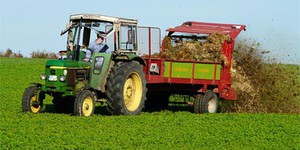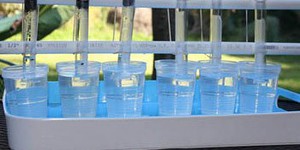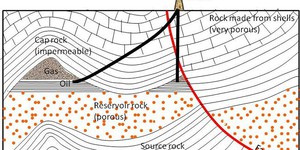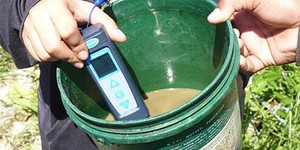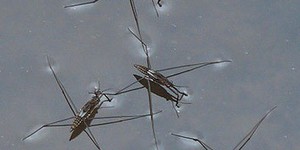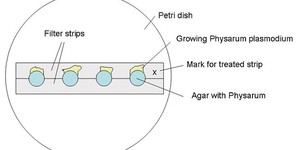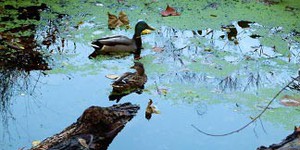Others Like “Using Daphnia to Monitor Water Toxicity” (top 20 results)
|
Many people routinely use fertilizer for crops, gardens, and lawns. What people don't know is that each time they apply fertilizer, the fertilizer seeps through the soil into the water table. This can eventually lead to the contamination of a local water source, like a stream, pond, lake, bay, or ocean. This is an especially big problem for agricultural practices that frequently use large amounts of fertilizer on fields that are connected by irrigation channels. The run-off of fertilizer…
Read more
Earth's atmosphere, the ocean of air that blankets the planet, is mostly nitrogen and oxygen, with small amounts of other gases. How much oxygen is present in air at sea level? In air high up in the Appalachians or Rockies? Atop Mount Everest? How much oxygen is present in the air you breathe? Here's a project that shows you how to measure the percentage of oxygen in an air sample.
Read more
If you'd rate yourself high on the bacteriophobia scale, just keep on scrolling down to the next project. Bacteria are all around us, and normally our body's defenses keep us blissfully unaware of them. If you don't mind finding out where they're lurking in your house, then you might find this project interesting.
Read more
You may have heard the expression, "You can't get blood from a stone." But what about oil? Can you get petroleum oil from a stone? In this geology science fair project, you'll find out what kinds of stones make the best storage rocks for oil. You'll see which ones can soak up oil like a sponge, and which ones cannot soak up oil or let it pass through, but can act as a "cap" to contain the oil in secret underground traps. Can a hard rock really act like a soft sponge... maybe SpongeBob…
Read more
Did you know that soils can be alkaline, neutral, or acidic? Most plants grow best in soil near neutral pH, but some plants prefer slightly acidic and others slightly alkaline soil. What is the pH of the soil in your garden? What happens to the pH of water that comes in contact with soil? In this science project you will get to find out.
Read more
Water striders (also called water bugs, pond skippers, etc.) are insects that can hop around on the surface of water (Figure 1). Unlike boats or other floating objects that are partially submerged and held up by the resulting buoyant force, water striders are held up by surface tension.
Figure 1. Water striders (image credit Isaka Yoji).
You can build your own water striders using thin wire (Figure 2 and following video). Do some background…
Read more
In this biology science fair project, you will observe how the Physarum polycephalum (P. polycephalum) organism responds to various amounts of glucose. P. polycephalum is easy to grow in a petri dish and responds in complex ways to its environment. Will it grow toward the chemical as it looks for a meal, or will it flee, trying to avoid further contact? Try this science fair project to learn more about chemotaxis in the fascinating Physarum polycephalum.
Read more
Chemicals from Earth's atmosphere are making their way down to the planet! Not in spaceships, but in rain. The acid rain can infiltrate ground water, lakes, and streams. How does acid rain affect aquatic ecosystems?
Read more
In order to study individual biochemical compounds like proteins, DNA, or RNA, biochemists need to know how to purify these components from a complex mixture. This is especially important for biotechnology and pharmaceutical industries, which sell purified biochemicals as reagents or drugs to consumers. Do an experiment to purify DNA, RNA, or protein from a complex mixture (for purifying DNA, see the Science Buddies project Extracting Onion DNA). The source of the material can be a cell…
Read more
Visit your local landfill to collect dumping statistics by watching the types of trash people bring to the dump. Identify problem areas and types of waste that are commonly brought to the dump. Propose new uses for common landfill problems like tires, construction materials, plastics, appliances, and computer parts. Measure packaging materials of some common products. Invent ways to reduce the amount of packaging and increase the use of recyclable materials like popcorn or corn-based packing…
Read more
|
Explore Our Science Videos
Build a Solar-Powered Car for the Junior Solar Sprint
Make a Thermometer - STEM Activity
Flower Dissection – STEM Activity


